Thung La - a sacred destination for tourists seeking peace and a unique cultural and natural environment.
Thung La Temple, with its quiet, poetic beauty, is a sacred place to worship the National Mother. It is one of the attractive destinations of Gia Vien district, Ninh Binh province, especially for tourists looking for peace, tranquility, and a unique cultural and natural environment.
1. General Introduction to Thung La
Gia Vien is an ancient land rich in historical traditions. Known as the land "where kings and saints are born," it is the birthplace of King Dinh Tien Hoang and Saint Nguyen Minh Khong. With a varied system of historical and cultural relics, fascinating scenic spots, and unique specialties, the Gia Vien district has attracted both domestic and foreign tourists.
One historical site that visitors should explore and pay homage to in Gia Vien is Thung La Temple. Located 15 km from the ancient capital of Hoa Lu and 20 km north of Ninh Binh City, Thung La Temple is in Gia Hung Commune, Gia Vien District, Ninh Binh Province. The temple, which has an area of 4 hectares, lies next to Hoa Lu Cave. There is good news that tourists don't have to pay for any entrance fee to get in. Thung La is nestled in a deep valley surrounded by five large mountains. This is the place to worship the Queen Mother of King Dinh Tien Hoang and the mysterious Queen Mother who had many contributions to helping King Dinh defeat the rebellion of 12 warlords. Legend has it that Vuong Ba was an excellent fortune teller and often read the leaves of King Dinh Tien Hoang before he went to war. The area is also known for its many medicinal herbs, so when King Dinh's soldiers were injured, they were all brought here for treatment. For these reasons, the place is named Thung La (Leaf Valley in Vietnamese).
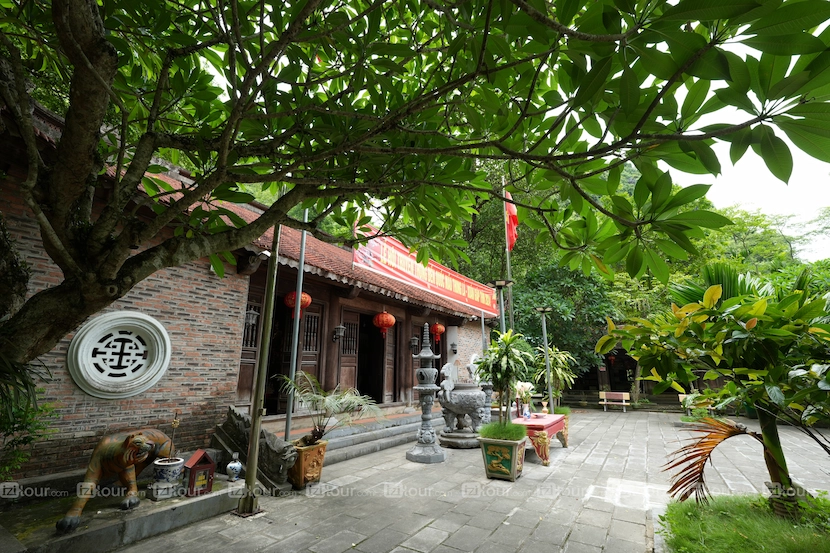
When visiting and praying at Thung La Temple, tourists may feel as though they have entered a fairyland with breathtaking natural beauty, the harmonious landscapes of mountains, the long paths leading to the caves, and lush green grass on the embankment slopes.
Today in every early spring, many visitors come to Thung La to pray for a prosperous new year and to practice or enjoy "Hau Dong" ceremonies - a unique cultural aspect of Vietnamese Mother Goddess worship.
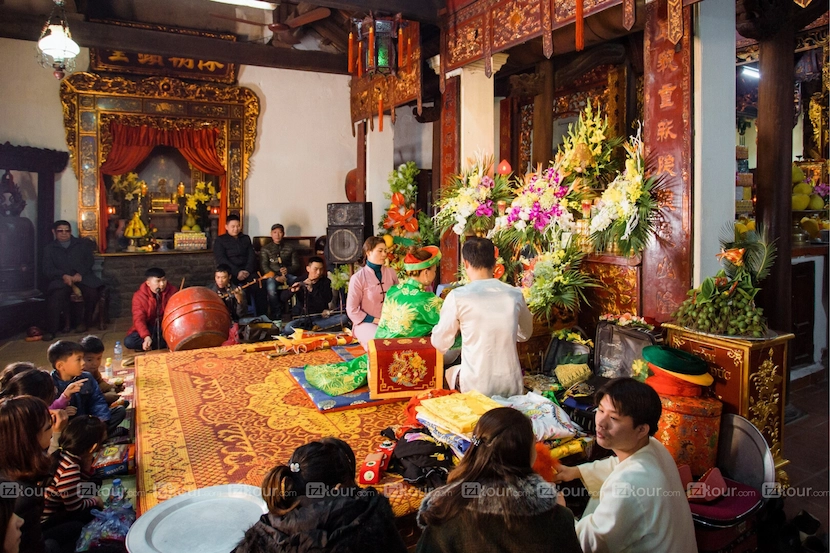
Besides, when coming here, you will have a chance to have an authentic conversation with Mr. Tuong - the temple guardian, and join a traditional instrument show performed by Mr. Tuyen - a folk artist.
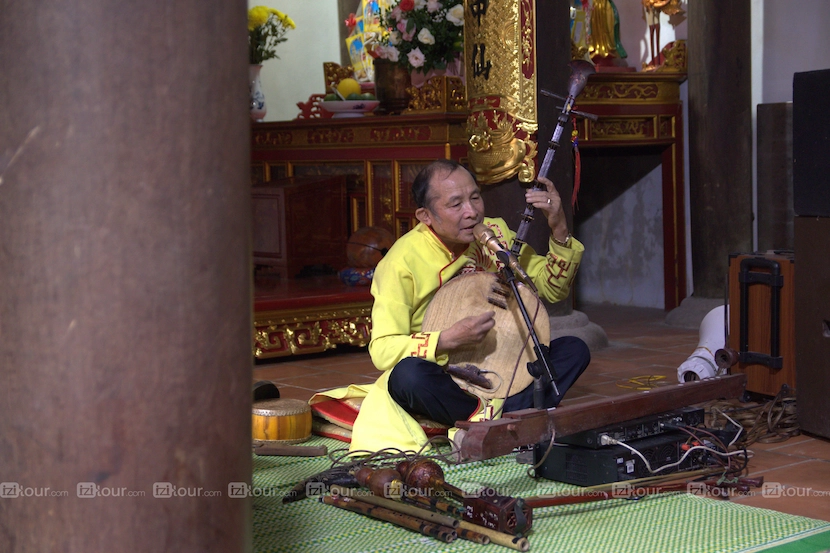
2. A Traditional Architecture of Thung La
Near Thung La lies Cut Pond, a place that still retains its pristine beauty and diverse ecosystem. The crystal clear water allows you to see the creatures beneath, the lake's surface beautifully reflects the sky and the lush, verdant mountains, and flocks of white storks foraging admist the grass, creating a serene and poetic green space that makes visitors feel peaceful and relaxed. To reach the Thung La Temple, visitors pass through a gentle slope with nearly 100 stairs leading up and down.
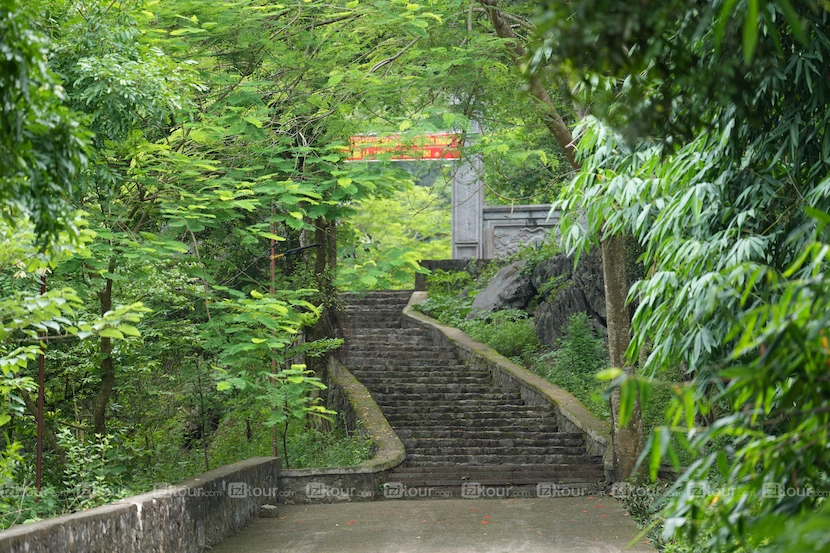
In front of the temple, there is a well with a mouth crafted from blue stone, intricately carved with images such as dragons, turtles, birds, and chrysanthemums. There is also a stone screen with a scroll-shaped design, topped with two dragons flanking the moon. Thung La features the architecture of "Tien Nhi, Hau Dinh". The front hall has three compartments leading to three openings, with no porch, decorated with dragons flanking the moon, which connects to the harem. Through the brick-paved courtyard, you will reach the Tien Te House, consisting of five compartments with a tiled roof.
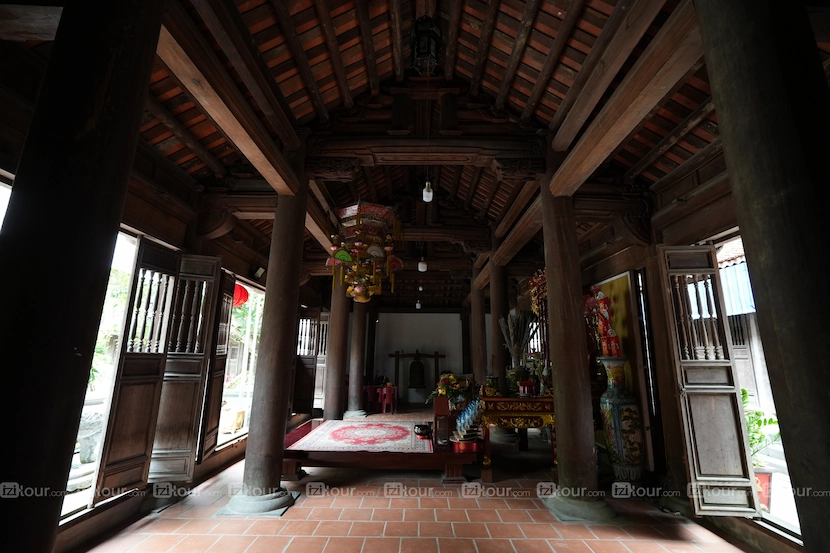
Inside the sanctum, the front area is dedicated to the Council of Dignitaries, and just beyond that is the revered statue of the National Mother, Anh Linh, housed in a red and gold lacquered alcove. Above all is the altar for the Three Holy Mothers (including De Nhat Thuong Thien, De Nhi Thuong Ngan, and De Tam Thoai Phu), who are significant figures in the ancient Vietnamese Mother Goddess worship. On the right side of the sanctum are altars for the Dignitaries, and on the left is the altar for Chua Thuong Ngan. Outside, adjacent to the mountain, there is Son Trang Palace (also known as Son Trang Cave).
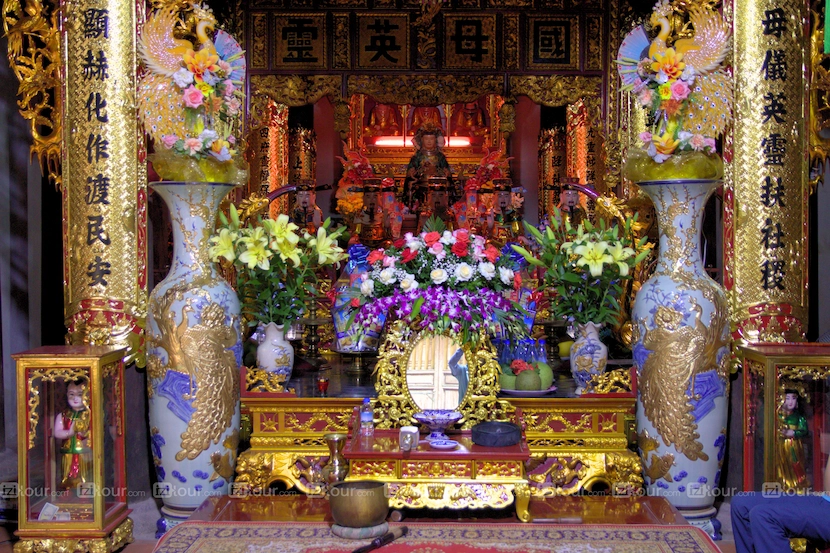
The natural and cultural environment here is jointly preserved by the local authorities and residents. With its wonderful architectural style, stone reliefs, and elaborate patterns, this place adds harmony, serenity, and antiquity.
3. Best Time to Visit Thung La
Thung La welcomes visitors all year round. To best enjoy the cultural and sacred atmosphere here with unique performances "Hau Dong", it is recommended you visit during the Thung La Temple Festival, which is held on the Lunar January 11th.
4. Getting to Thung La
It is about 95km from Hanoi to Thung La, so it will take about two hours to get there. There are a variety of transport services that can help you get to Thung La.
- Motorbike: Getting to Ninh Binh by motorbike or car is a popular choice for tourists, offering the freedom to make a stop and capture scenic moments. The quickest route on motorbike is National Road 1A (QL1A), taking around 2.5 hours.
- Local bus: Local buses depart from various bus stations in Hanoi, including My Dinh, Giap Bat, and Nuoc Ngam, and arrive at different Ninh Binh bus stations, such as Ninh Binh, Nho Quan, Kim Son, Hoa Lu, and Tam Diep. Choosing a local bus is a budget-friendly option, with ticket prices ranging between 80,000 and 200,000 VND, depending on the bus type. However, there will be a language barrier between foreigners and drivers, and this option will be much slower than others as these local buses will not go on the expressway and stop at many points along the way.
- Shuttle bus: The primary advantage of choosing a limousine for your journey from Hanoi to Ninh Binh is the privacy it offers. Unlike local buses, you will enjoy your own dedicated space to relax. The limousine is equipped with various amenities, including USB charging ports, air conditioning, televisions, Wi-Fi, and refreshments. Remarkably, limousine fares are still affordable, with one-way tickets priced between 135,000 and 180,000 VND. Reliable limousine companies include Khanh An Limousine and The Long Travel.
- Private car: This is a popular choice for a family or groups of friends going on holiday. Private cars offer the freedom to stop and enjoy scenic views from windows. You can go on the Hanoi-Ninh Binh Expressway, which takes about 1.5 hour.
- Taxi: It is easy to book a taxi from a taxi company or easier with online apps such as Grab, Xanh SM and Be. These apps will offer a clear price from the beginning, which will help you to make decisions more quickly.
- Train: For travelers on a budget, taking the train is the most cost-effective choice. Train tickets from Hanoi to Ninh Binh usually range between 90,000 and 200,000 VND, depending on the class of seat and booking time. To get the best prices, it's recommended to avoid peak seasons and book your tickets in advance.
5. Practical Advice
Since Thung La Temple is a sacred place of worship, tourists should pay attention to the clothes you are wearing to show respect. This means clothing items such as skirts and shorts should be avoided. They need to cover your shoulders and knees. And wearing shoes is highly recommended as you will walk a lot. Besides, bringing sunglasses, sunscreen, a hat or an umbrella in order to avoid the sun during summer days is not a bad idea.
If you are wondering what to do in Vietnam, visiting Ninh Binh and the Thung La Temple is an essential answer for those seeking authenticity and pristine nature. Situated in the heart of Ninh Binh, Vietnam, this sanctuary offers a unique blend of natural beauty, culture, and tradition. Immerse yourself in the enchanting atmosphere of this sacred site through the video clip produced by the IZITOUR team. Make this visit a part of your Vietnam travel itinerary and lose yourself in the mystical ambiance of this iconic temple. Follow us for more inspiring journeys!
(Video clip produced by the IZITOUR team in 2025)
Hopefully, our article about Thung La will provide some helpful tips and information for you to better prepare for your trip to Ninh Binh, Vietnam. If you would like to learn more about Vietnam and its breathtaking tourist attractions such as Ninh Binh, feel free to leave a comment below.
Ninh Binh Scenic and Cultural Trip
You may like to read:
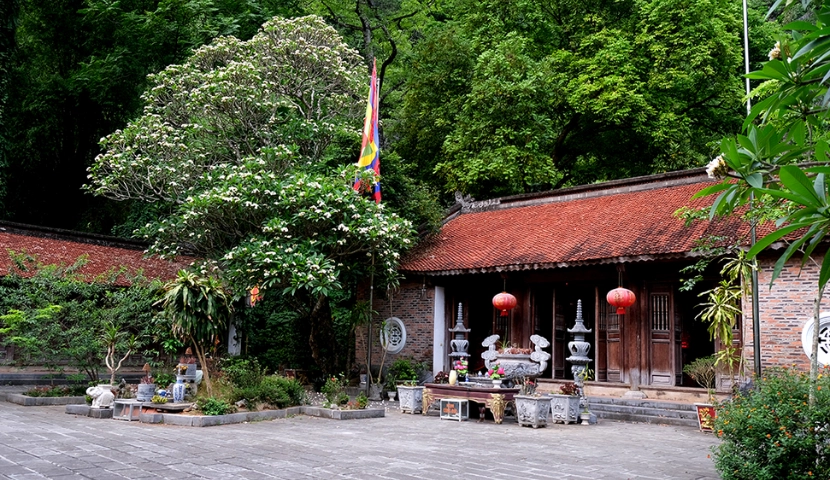







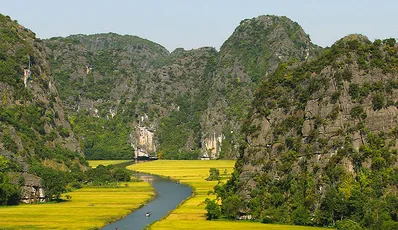
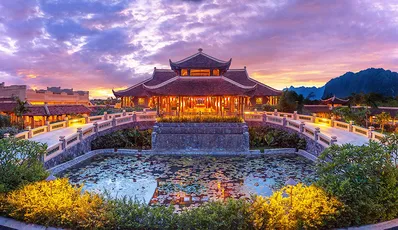

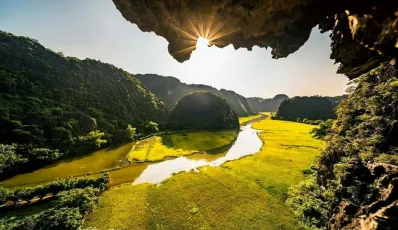
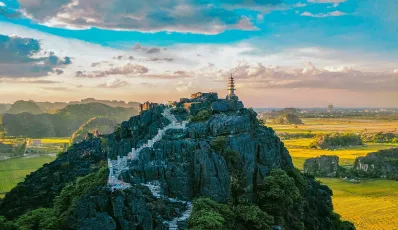
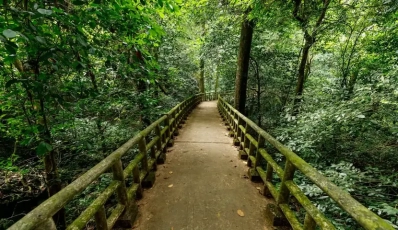
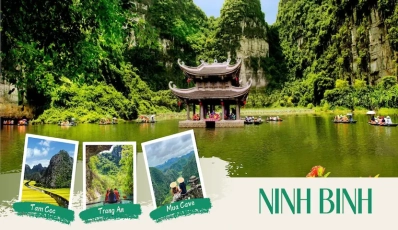





 TRAVELERS' CHOICE 2026
TRAVELERS' CHOICE 2026 


